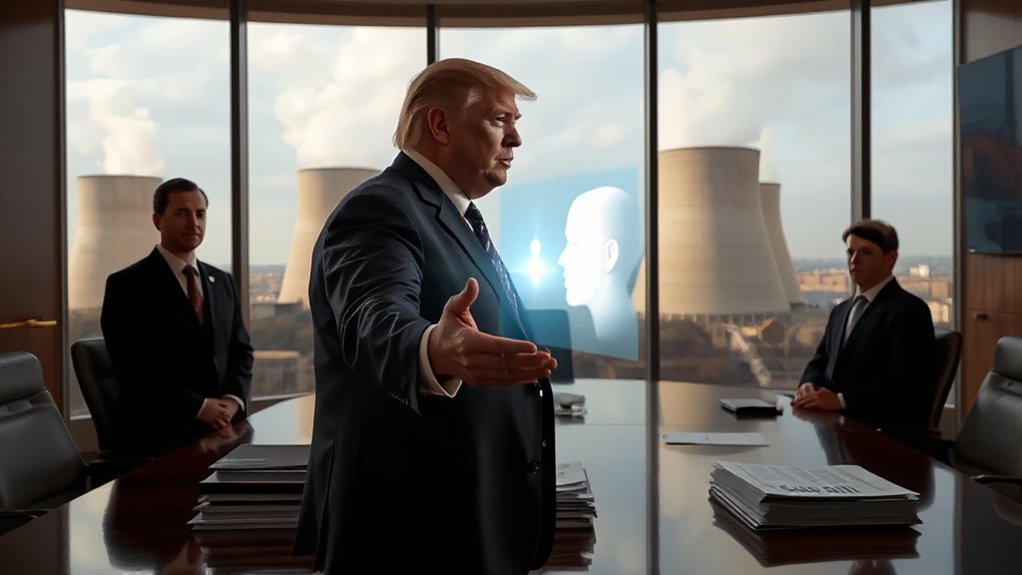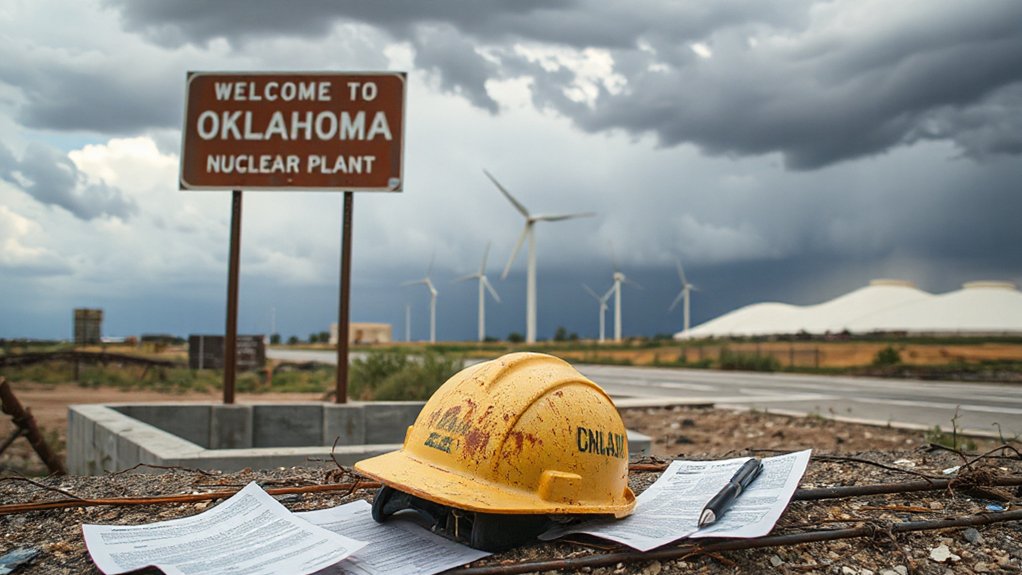While Democrats scramble to regulate the AI boom, former President Trump has presented a sweeping deregulatory vision for America’s artificial intelligence future. The ambitious 25-page AI Action Plan, revealed July 23, 2025, outlines over 90 federal policy actions aimed at catapulting the United States to global AI dominance.
Trump’s approach? Cut the red tape. The plan focuses on three main pillars: accelerating innovation, building American AI infrastructure, and leading international diplomacy. Gone are the Biden-era regulatory handcuffs. In their place: a market-driven framework that has tech executives practically salivating.
Trump’s deregulation playbook: unleash innovation, build infrastructure, dominate globally—while tech giants cheer wildly.
The administration didn’t stop with a mere plan. Three executive orders dropped simultaneously, creating what insiders are calling an “American AI Technology Stack” for export to allies. Another EO slashes permitting timelines for data centers and semiconductor facilities. Building massive AI compute facilities just got a whole lot easier.
Perhaps most controversially, Trump’s third executive order mandates “Unbiased AI Principles” for federal procurement. Translation: no more “woke AI.” The administration is pushing for ideologically neutral systems, scrubbing concepts like Diversity, Equity, and Inclusion from AI risk frameworks. Truth-seeking is in; progressive programming is out.
The plan has workforce initiatives too. After April’s executive orders on AI education, this new framework doubles down on preparing American workers for an AI-transformed economy. Apprenticeships, STEM education, and training programs feature prominently. The plan establishes an AI Workforce Research Hub under the Department of Labor to address skills development and job displacement.
National security concerns permeate the document. Intelligence agencies will collaborate on monitoring foreign AI projects, while the Department of Defense gets the green light for aggressive AI adoption. The strategy draws inspiration from Boston’s successful predictive maintenance systems that have extended infrastructure lifespan by over a decade. The message to China is clear: we’re in it to win it.
With over 10,000 public comments shaping the policy, the administration claims broad support. The plan specifically seeks to protect American IP from foreign adversaries while promoting American technological leadership abroad. Critics call it reckless deregulation; supporters see American innovation set free. Either way, Trump’s AI vision represents a stark departure from cautious oversight models. Ready or not, America’s AI future just got turbocharged.
References
- https://www.seyfarth.com/news-insights/trump-administration-releases-ai-action-plan-and-three-executive-orders-on-ai-what-employment-practitioners-need-to-know.html
- https://www.sidley.com/en/insights/newsupdates/2025/07/the-trump-administrations-2025-ai-action-plan
- https://www.whitehouse.gov/articles/2025/07/white-house-unveils-americas-ai-action-plan/
- https://hai.stanford.edu/news/inside-trumps-ambitious-ai-action-plan
- https://www.whitehouse.gov/wp-content/uploads/2025/07/Americas-AI-Action-Plan.pdf
- https://www.squirepattonboggs.com/en/insights/publications/2025/02/key-insights-on-president-trumps-new-ai-executive-order-and-policy-regulatory-implications
- https://www.ai.gov
- https://trumpwhitehouse.archives.gov/ai/
- https://www.insidegovernmentcontracts.com/2025/08/july-2025-ai-developments-under-the-trump-administration/
- https://www.ai.gov/initiatives/education









